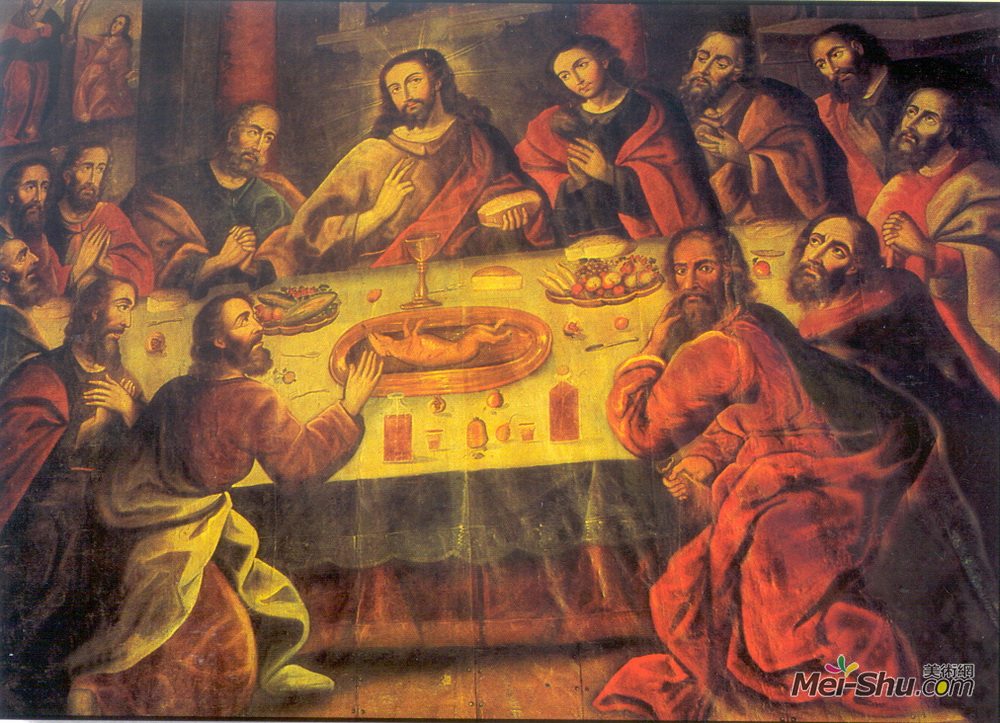 马科斯·萨帕塔(Marcos Zapata)高清作品《最后的晚餐》
马科斯·萨帕塔(Marcos Zapata)高清作品《最后的晚餐》
作品名:最后的晚餐
艺术家:马科斯·萨帕塔
年代:1753
风格:巴洛克
类型:宗教绘画
与其吃传统的逾越节羊肉,耶稣和门徒们似乎在享用摆在桌子中央的一盘羊肉。这幅画中包含了美食,这是因为美食的不同,但也是象征主义的一个例子:在犹太教和基督教的传统中,羔羊是一种祭祀动物,但在传统的印加仪式中,美食是一种祭祀动物。艺术家用一个对秘鲁人民更有意义的祭祀符号,讲述了复活节故事中的祭祀。桌上的摊子显示耶稣和门徒们正在享用秘鲁饮料.chicha.以及土豆、胡椒和玉米等天然水果和蔬菜。据信,画家画出背叛耶稣的门徒犹大(画底部,拿着钱袋,穿着红色的衣服,看着观众),与负责印加帝国灭亡的西班牙征服者弗朗西斯科·皮萨罗相似。
Title:The Last Supper
artist:Marcos Zapata
Date:1753
Style:Baroque
Genre:religious painting
Rather than eating a traditional Passover meal of lamb, Jesus and the disciples appear to be enjoying a plate of cuy (guinea pig, a common meat dish enjoyed to this day in Peru), shown in the center of the table. The inclusion of the cuy in this painting is due to the difference in cuisine, but also is an example of symbolism: lamb was a sacrificial animal in the Judeo-Christian tradition, but cuy was a sacrificial animal in traditional Inca ceremonies. By using a symbol of sacrifice that was more meaningful to the Peruvian people, the artist makes a statement about the sacrifice in the story of Easter. The spread on the table shows that Jesus and the disciples are enjoying chicha, a Peruvian drink, and native fruits and vegetables such as potatoes, peppers, and corn. It is believed that the artist painted Judas, the disciple who betrayed Jesus (shown at the bottom of the painting, holding the money bag, dressed in red and looking out at the viewer), to bear a resemblance to Francisco Pizarro, the Spanish conquistador responsible for the fall of the Inca empire.
作品名称:《最后的晚餐》马科斯·萨帕塔(Marcos Zapata)高清作品欣赏
作品链接:https://www.mei-shu.com/famous/27140/artistic-108032.html
作品类别:油画
免责声明:本站部分公开资料来源于互联网,目的是用于学术交流与讨论,并不代表本网赞同其观点和对其真实性负责。如果您认为我们的侵犯了您的权益,请与我们联系(banquan#mei-shu.com #替换为@),我们将在第一时间删除相关内容。